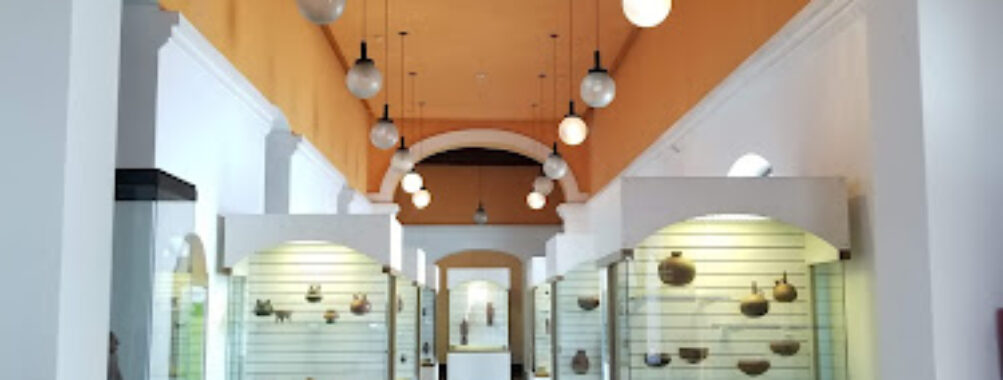
Central Bank Museum – Ibarra
“`html
Table of Contents
Description
The Central Bank Museum in Ibarra is one of those places that quietly surprises you. At first glance, it might seem like just another regional museum, but once you step inside, the depth of history and culture it holds becomes clear. The museum was originally established in the mid-20th century and has since grown into a cultural hub that preserves the story of northern Ecuador. It’s not flashy or overwhelming, but it has a certain charm that makes you want to linger. The exhibits cover everything from pre-Inca ceramics and gold artifacts to colonial and republican art. There’s even a historical archive and a small library for those who like to dig a little deeper.
What makes this museum stand out is its ability to balance academic richness with accessibility. It’s not only a space for scholars but also for families, school groups, and curious travelers. The layout is simple—just one main floor—but it’s thoughtfully divided into sections that guide you through different eras of Ecuador’s history. You don’t have to be a history buff to enjoy it; the artifacts themselves are fascinating, and the stories they tell are universal. And yes, it’s kid-friendly, which is a huge plus if you’re traveling with little ones who need a mix of education and entertainment.
Accessibility is another strong point. The museum is wheelchair-friendly, with accessible entrances, restrooms, and parking, which isn’t always the case in older Ecuadorian buildings. While it doesn’t have an on-site restaurant, the surrounding area has plenty of local spots to grab a bite. In terms of atmosphere, it’s calm, reflective, and refreshingly free of crowds compared to larger museums in Quito or Guayaquil. Some visitors might find it modest compared to bigger institutions, but others—myself included—see that as part of its appeal. It feels personal, almost like you’ve stumbled into a well-kept secret.
Key Features
- Collection of pre-Inca ceramics and gold artifacts from the Sierra Norte region
- Colonial and Republican art room showcasing paintings and religious pieces
- Historical archive and library for deeper research
- Temporary exhibition hall with rotating displays
- Wheelchair accessible entrances, restrooms, and parking
- Good for kids and educational for school groups
- Calm, uncrowded environment ideal for slow exploration
Best Time to Visit
If you’re planning to include the Central Bank Museum in your itinerary, weekdays are usually the best. The mornings tend to be quieter, giving you the chance to explore at your own pace without feeling rushed. And since Ibarra has a fairly mild climate year-round, you don’t have to worry about extreme weather interfering with your visit. Personally, I’d suggest combining it with a walk around Ibarra’s historic center in the late afternoon—the museum gives you the context, and then the streets bring that history to life.
Avoid major holidays if you can, since local families and school groups often fill the museum during those times. But even then, it rarely feels overcrowded compared to the big city museums. The museum’s indoor setting also makes it a perfect rainy-day activity, which is always good to have as a backup when traveling.
How to Get There
Reaching the museum is pretty straightforward if you’re already in Ibarra. The city is well connected by road, and buses run regularly from Quito, which is about a two-hour drive away. If you’re the type who likes more flexibility, renting a car is a good option—it gives you the freedom to explore the surrounding Imbabura province, which is full of lakes, mountains, and small towns worth visiting.
Once in Ibarra, taxis are affordable and reliable, and most drivers know exactly where the museum is. If you’re staying in the historic center, you could even walk, depending on your accommodation. Just keep in mind that while the city is safe during the day, it’s always best to be cautious when walking at night.
Tips for Visiting
First and foremost, give yourself at least an hour or two to wander through the exhibits. It’s not a huge museum, but rushing through means you’ll miss the little details that make it special. Bring a bit of curiosity and an open mind—the museum doesn’t always have flashy displays, but the artifacts themselves carry weight if you take the time to appreciate them.
Photography policies can vary, so it’s worth asking at the entrance before snapping away. And since there’s no restaurant inside, plan to eat before or after your visit. I usually grab a plate of hornado or fritada at one of the nearby eateries—it feels like part of the experience. If you’re traveling with kids, the museum is manageable in size, so they won’t get bored or overwhelmed. Just be ready to answer a lot of questions, because the exhibits tend to spark curiosity.
Lastly, don’t overlook the temporary exhibitions. They often feature contemporary artists or special themes that give you a fresh perspective on Ecuadorian culture today. It’s these rotating displays that keep the museum dynamic, so even if you’ve been before, there’s always something new to discover. And honestly, that’s what makes me want to go back every time I’m in Ibarra.
“`
Location
Places to Stay Near Central Bank Museum - Ibarra
Find and Book a Tour
Explore More Travel Guides
No reviews found! Be the first to review!